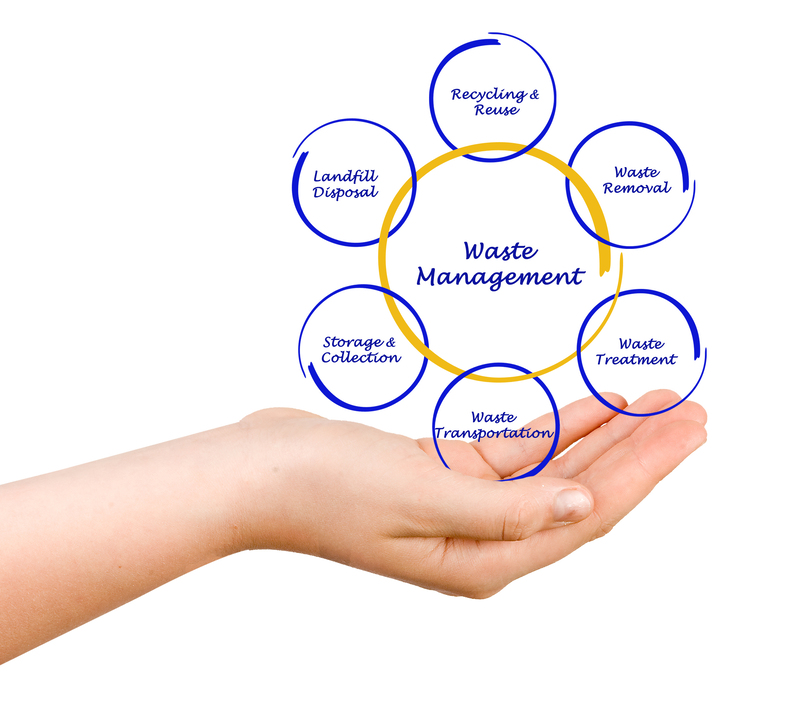Pioneering Eco-Friendly Packaging and Cardboard Disposal
In today's environmentally-conscious world, the move towards eco-friendly packaging and effective cardboard disposal is more vital than ever. As consumer demand shifts towards sustainability, and as climate change concerns heighten, businesses and individuals are rapidly adopting innovative practices that minimize environmental footprint and contribute to a greener future. This comprehensive article delves into the evolving landscape of eco-friendly packaging solutions and explores the best practices in cardboard recycling and disposal.

Why Eco-Friendly Packaging Matters
The packaging industry is a major contributor to global waste, with single-use plastics and non-biodegradable materials filling landfills and polluting our ecosystems. However, eco-friendly packaging presents a sustainable alternative that uses renewable, recyclable, or biodegradable materials, helping to reduce waste and environmental pollution.
- Conserves Natural Resources: Using renewable resources such as paper, bamboo, and cornstarch helps preserve the planet's precious materials.
- Reduces Carbon Footprint: Manufacturing and transporting lightweight, recyclable packaging lowers greenhouse gas emissions.
- Minimizes Landfill Waste: Biodegradable and compostable options break down naturally, decreasing landfill volume.
- Boosts Brand Reputation: Companies adopting green packaging frequently see increased consumer support and loyalty.
Key Features of Eco-Friendly Packaging
- Biodegradability: Made from materials that naturally decompose without releasing toxins.
- Recyclability: Can be processed and reused, reducing the need for virgin materials.
- Renewable Sources: Derived from quickly replenished plants or agricultural by-products.
- Reduced Energy Consumption: Manufacturing processes require less energy compared to traditional packaging.
Cardboard: The Heart of Sustainable Packaging
Of all packaging materials, cardboard stands out for its sustainability. It is lightweight, strong, and highly versatile, making it the backbone of packaging for shipping, retail, and consumer products.
Benefits of Cardboard Packaging
- Renewable Material: Cardboard is typically made from wood pulp, a renewable resource.
- Easy to Recycle: Cardboard products are easily collected and processed into new packaging or paper products.
- Customizable: It can be tailored in thickness and shape for specific product needs.
- Cost-Effective: Production and recycling processes are generally economical and scalable.
- Minimal Environmental Impact: When responsibly managed, cardboard poses less risk to the environment than plastics or other materials.
Innovations in Eco-Friendly Packaging Solutions
The drive for sustainability has unleashed a wave of innovation in packaging. Companies are now introducing groundbreaking products and strategies, including:
Biodegradable and Compostable Packaging
- Plant-Based Films: Derived from cornstarch, cellulose, or sugarcane, these films decompose naturally when discarded.
- Mushroom Packaging: Made from agricultural waste and mycelium, it's compostable at home and industrial facilities.
- Edible Packaging: Innovations allow some wrappers and containers to be safely consumed alongside the product.
Recyclable Cardboard Solutions
- Water-Based Inks and Adhesives: Use of non-toxic, water-soluble glues and printing methods enhances recyclability.
- Minimal Use of Laminates: Avoiding plastic laminates ensures cardboard can be recycled more efficiently.
Reusable Packaging Alternatives
- Returnable Shipping Boxes: Designed for multiple journeys, promoting a circular economy model.
- Multi-use Packaging Designs: Clever engineering allows boxes to have secondary functions, such as storage or display units.
Effective Cardboard Disposal and Recycling Practices
Despite the merits of cardboard packaging, its environmental benefits largely depend on how it is disposed of. Proper cardboard disposal and recycling practices are essential to closing the sustainability loop.
Preparing Cardboard for Recycling
- Remove Contaminants: Eliminate food residues, plastic tapes, and any non-paper inserts from boxes.
- Flatten Boxes: Breaking down boxes saves space in recycling bins and makes processing easier.
- Keep Dry: Wet or greasy cardboard (like pizza boxes) can contaminate the recycling stream. Compost these separately if possible.
Local Recycling Guidelines
Recycling systems vary by region. Some accept only clean, uncoated cardboard, while others can process coated or waxed varieties. Always check local municipality guidelines for specific instructions on cardboard recycling.
Composting Cardboard
- Brown Material for Compost: Shredded cardboard acts as a great source of carbon, balancing 'green' nitrogen-rich waste.
- Avoid Chemical Coatings: Only compost untreated, unprinted cardboard. Glossy or colorful inks can introduce toxins.
Industrial vs. Consumer Cardboard Disposal
On a commercial scale, businesses must handle much larger volumes of cardboard waste. Leading companies invest in:
- Baling Equipment: Cardboard is compacted into bales for efficient storage and transport.
- Zero-Waste Initiatives: Some firms have adopted closed-loop recycling, returning all materials for reuse in new packaging.
- Partnerships with Recyclers: Dedicated recycling firms offer pick-up and processing services to maximize recovery rates.
The Environmental Benefits of Cardboard Recycling
When done correctly, recycling cardboard provides significant ecological advantages:
- Energy Conservation: Recycling one ton of cardboard saves over 46 gallons of oil and 9 cubic yards of landfill space.
- Pollution Reduction: Diminishes air and water pollution related to manufacturing new cardboard from raw material.
- Reduced Deforestation: Using recycled fibers lessens the need for virgin wood pulp, protecting forests and biodiversity.
- Promotes a Circular Economy: Materials regenerate into new products, reducing resource extraction and waste.
The Role of Business & Consumer in Sustainable Packaging
Both businesses and individual consumers have pivotal roles to play in the move towards greener packaging.
How Businesses Can Lead the Way
- Source Wisely: Procure packaging from certified, eco-friendly suppliers using recycled or renewable materials.
- Design for Disposal: Ensure packaging is easy to dismantle and recycle, limiting glue and mixed material use.
- Engage Customers: Educate buyers on how to reuse or recycle packaging responsibly.
- Innovate Continuously: Regularly update packaging methods to embrace the latest eco-technologies.
What Consumers Can Do
- Choose Sustainable Brands: Support companies committed to eco-friendly packaging solutions.
- Segregate Waste: Sort cardboard from other recyclables and ensure it's clean before disposal.
- Reduce, Reuse, Recycle: Reuse boxes for storage or gifting, recycle when possible, and minimize packaging waste overall.

The Future of Eco-Friendly Packaging and Cardboard Disposal
The shift towards sustainable packaging is accelerating as technology advances and awareness grows. Future trends likely to shape the industry include:
- Smart Packaging: Integrating QR codes for easy recycling instructions or supply chain transparency.
- Material Innovation: New biodegradable composites and stronger recycled fibers.
- Enhanced Regulations: Governments enforcing stricter packaging waste laws, pushing businesses towards compliance.
- Consumer Participation: Apps and digital platforms to reward responsible disposal and educate the public.
- Global Collaboration: International efforts to standardize and elevate sustainable packaging and recycling practices.
Conclusion: Championing Eco-Friendly Packaging and Responsible Cardboard Disposal
Adopting pioneering eco-friendly packaging and responsible cardboard disposal methods isn't just a passing trend--it's a necessary step in safeguarding our environment, conserving resources, and building a more sustainable society for generations to come.
Whether you are a business owner seeking innovative sustainable packaging or a consumer wishing to shrink your environmental footprint, embracing these practices transforms you into an active participant in the global green movement. Stay informed, make responsible choices, and inspire those around you to prioritize eco-friendly packaging and cardboard disposal for a cleaner, healthier Earth.
Together, we can close the loop and pioneer a sustainable future--one box at a time.